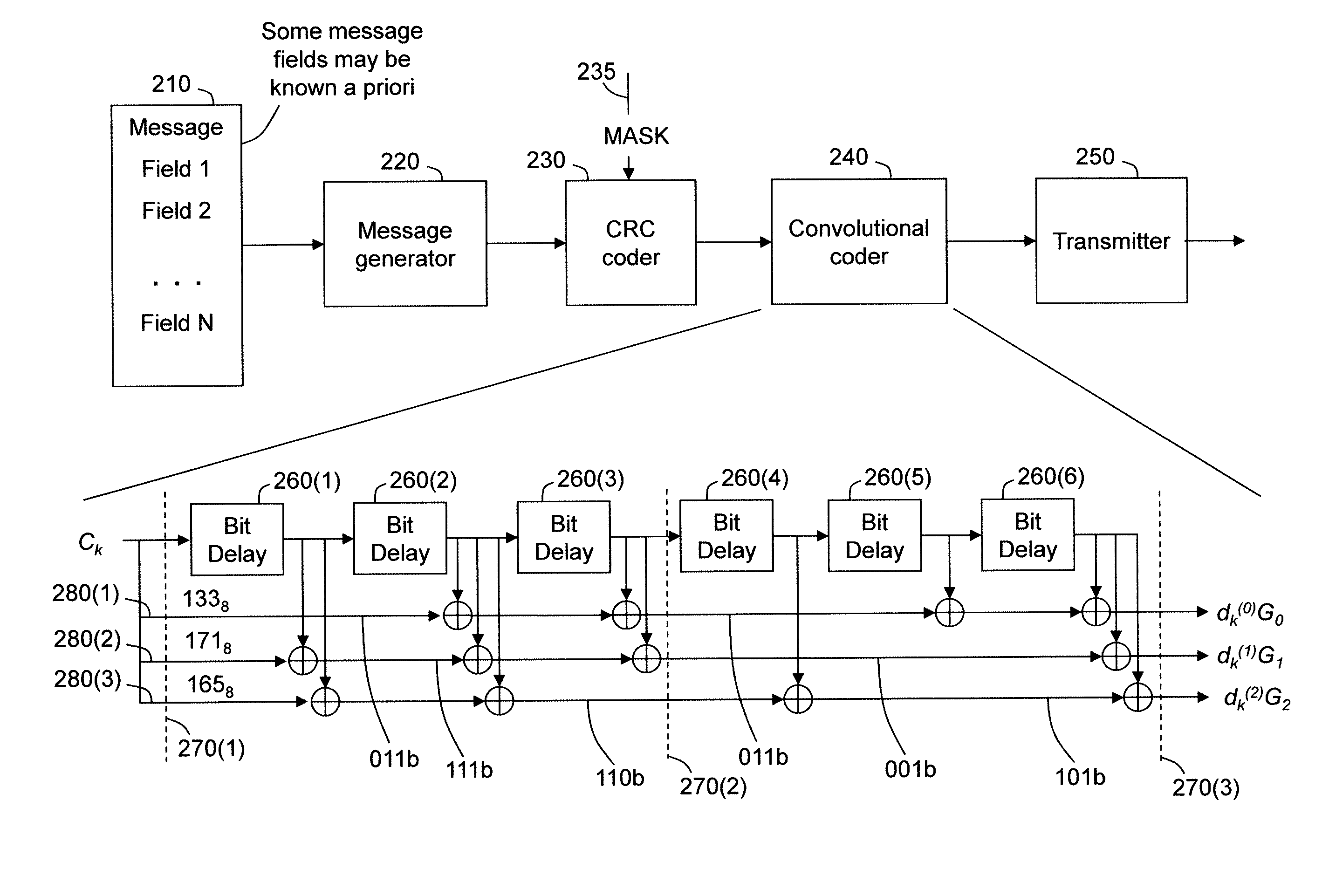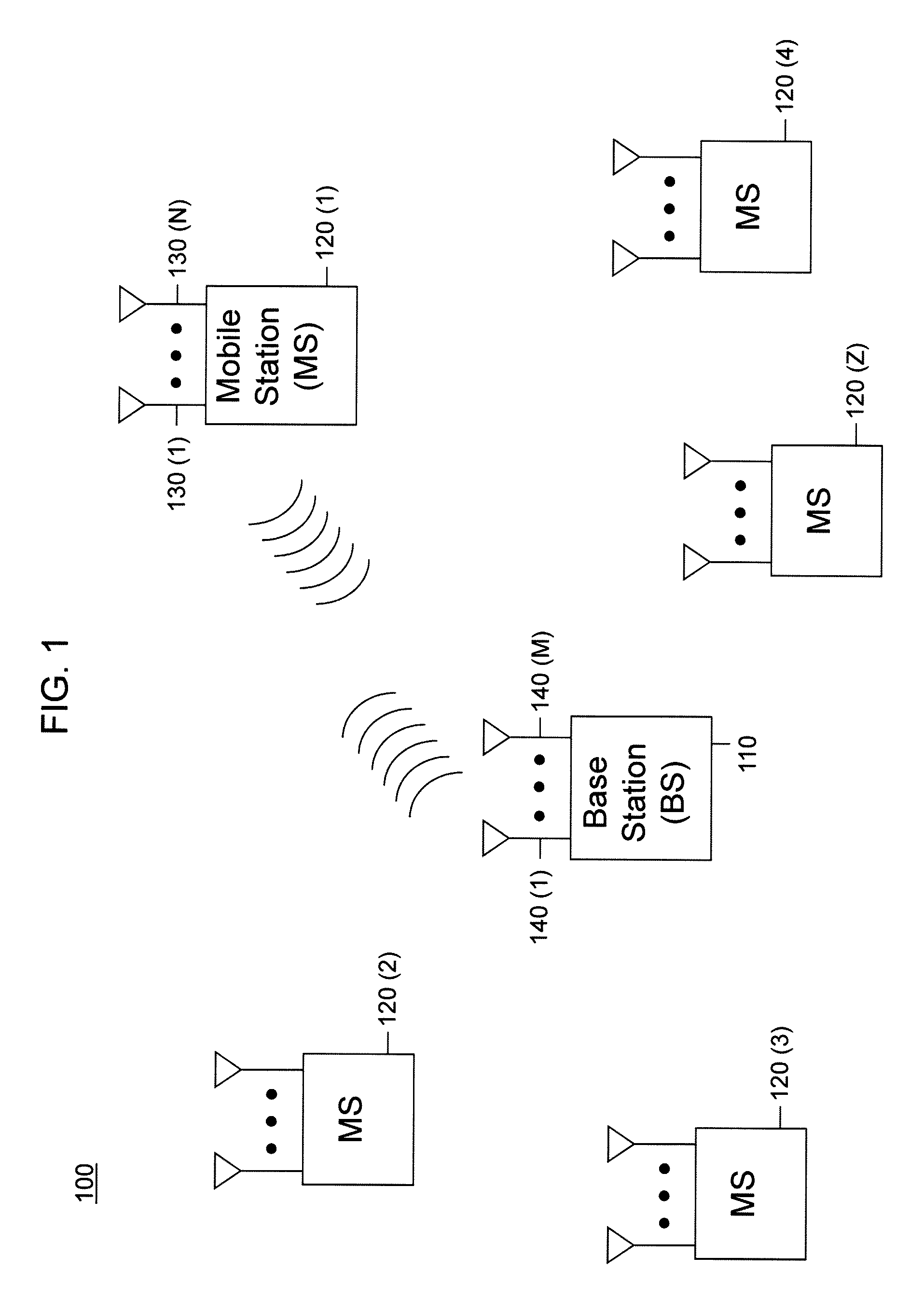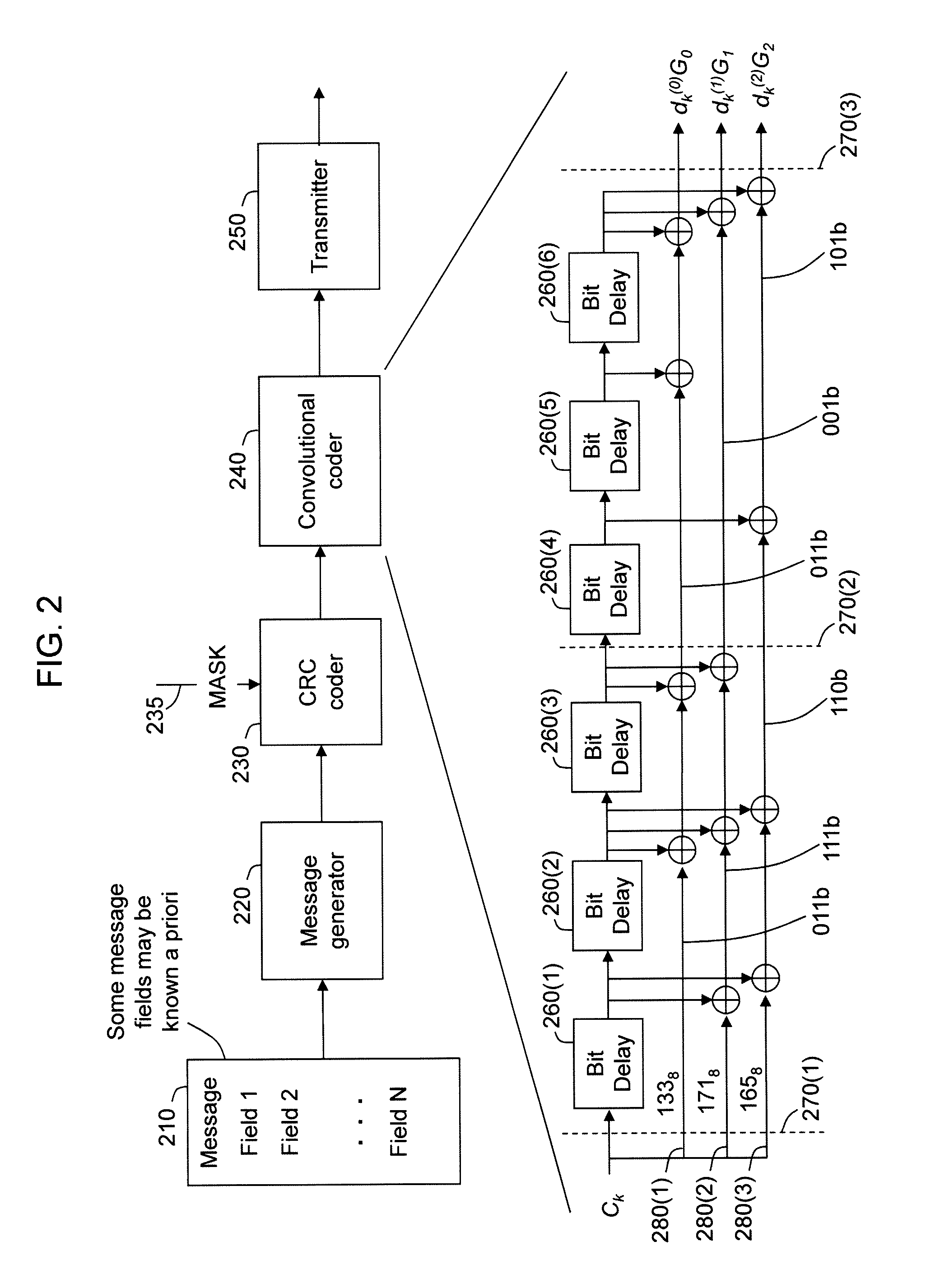Tail-biting convolutional decoder and decoding method
a convolutional decoder and tail-biting technology, applied in the field of wireless communication devices, can solve the problems of reduced spectral efficiency, higher decoding complexity of tail-biting convolutional codes, and improve the performance of tailed convolutional codes, so as to reduce false detection rate (fdrs) and/or detection error rate (ders).
- Summary
- Abstract
- Description
- Claims
- Application Information
AI Technical Summary
Benefits of technology
Problems solved by technology
Method used
Image
Examples
Embodiment Construction
[0027]Referring first to FIG. 1, a wireless radio communication system or network is shown generally at reference numeral 100 and comprises a base station (BS) 110, and a plurality of mobile stations (MSs) 120(1)-120(Z). The BS 110 may connect to other wired data network facilities (not shown) and in that sense serve as a gateway or access point through which the MSs 120(1)-120(Z) have access to those data network facilities.
[0028]The BS 110 comprises a plurality of antennas 140(1)-140(M) and the MSs 120(1)-120(Z) may also comprise a plurality of antennas 130(1)-130(N). The BS 110 may wirelessly communicate with individual ones of the MSs 120(1)-120(Z) using a wideband wireless communication protocol in which the bandwidth is much larger than the coherent frequency bandwidth. Examples of such wireless communication protocols are Time Division Synchronous Code Division Multiple Access (TD-SCDMA) and Time Division Long Term Evolution (TD-LTE).
[0029]Techniques are provided herein to en...
PUM
 Login to View More
Login to View More Abstract
Description
Claims
Application Information
 Login to View More
Login to View More - R&D
- Intellectual Property
- Life Sciences
- Materials
- Tech Scout
- Unparalleled Data Quality
- Higher Quality Content
- 60% Fewer Hallucinations
Browse by: Latest US Patents, China's latest patents, Technical Efficacy Thesaurus, Application Domain, Technology Topic, Popular Technical Reports.
© 2025 PatSnap. All rights reserved.Legal|Privacy policy|Modern Slavery Act Transparency Statement|Sitemap|About US| Contact US: help@patsnap.com



